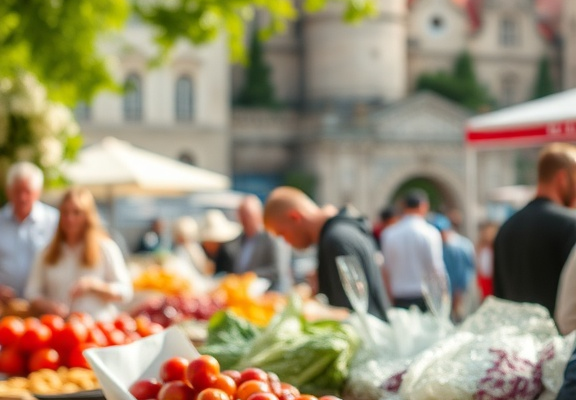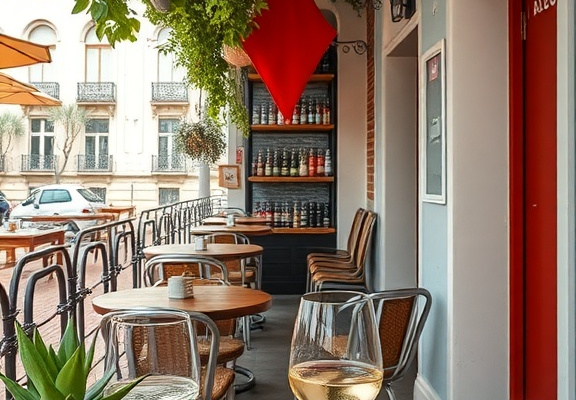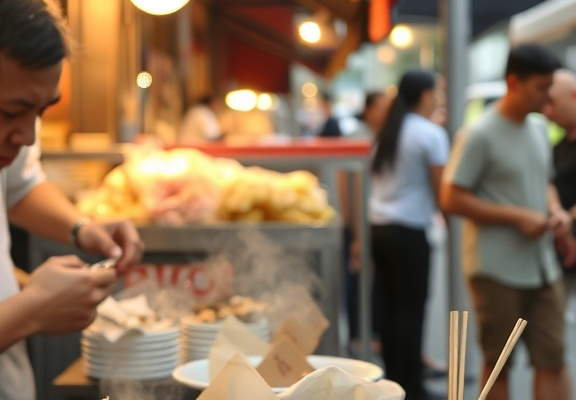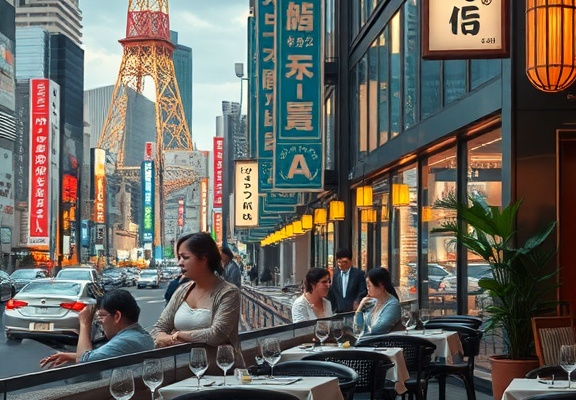The Rich Tapestry of Cultural Food Experiences in Morocco: A Culinary Journey
Morocco is a land rich in culture and history, and this is vividly reflected in its culinary traditions. When you travel to Morocco, you embark on a sensory experience filled with vibrant colors, aromatic spices, and tantalizing flavors, making it one of the most exciting destinations for food lovers. The cultural food experiences in Morocco create a tapestry woven from the influences of Berber, Arab, and French cuisines, culminating in a unique relationship between the people and their food.
Thank you for reading this post, don't forget to subscribe!One of the first delights you will encounter is the traditional Moroccan tagine. This slow-cooked stew, named after the earthenware pot in which it is prepared, can be filled with a variety of ingredients like chicken, lamb, vegetables, and an array of spices. The cooking process allows the flavors to meld beautifully, giving you a taste of the local soul. You can find tagines prepared differently in each region, offering variations that reflect local preferences and available ingredients.
Your culinary journey doesn’t stop there. Street food is an essential part of Morocco’s food culture. As you wander through the bustling markets, the aroma of grilled meats will draw you in. Kebabs, known locally as “brochettes,” are a must-try. Vendors grill them right in front of you, often served with a side of fresh Moroccan bread and chili sauce. This street food experience is more than just a meal; it’s an invitation to share stories with locals and immerse yourself in the vibrant everyday life of Morocco.
Next, let’s talk about the rich variety of spices that define Moroccan cuisine. Spices like cumin, coriander, saffron, and cinnamon are fundamental to creating deep, rich flavors. You can visit spice markets, known as souks, where the colors of spice powders are a feast for the eyes. Here you can learn about their significance and how they are blended to create the harmonious flavor profiles that Moroccan dishes are known for. It is not uncommon to see merchants offering samples, allowing you to taste the essence of Morocco before bringing it home.
For dessert lovers, Moroccan sweets are a cultural highlight. One of the most famous treats is “baklava,” layers of filo pastry filled with nuts and syrup. Another local favorite is “kaab el ghazal,” a crescent-shaped pastry filled with almond paste. These delicate sweets are often enjoyed with mint tea, a traditional beverage that symbolizes hospitality. The process of making mint tea is practically a ritual, showcasing the importance of social interactions over meals in Moroccan culture. You will often find locals serving tea from a height, creating a frothy finish that adds to the flavor.
To further enhance your understanding of Moroccan cuisine, a cooking class can provide invaluable insights. Here, you can learn how to prepare traditional dishes using local methods and ingredients. Many chefs embrace farm-to-table practices, ensuring you can taste the freshness of the produce. You will not only learn recipes but also the stories behind them, gaining a deeper appreciation for how history and culture influence Moroccan cooking.
Another way to engage with the culinary culture in Morocco is through local festivals and food markets that celebrate traditional foods. Events like the Fes Festival of World Sacred Music highlight how food intertwines with music and arts, creating a rich cultural experience. Here you can find local vendors selling their specialties, while musicians and dancers perform, bringing a lively atmosphere that enhances the enjoyment of food.
It’s important to note the region’s embrace of healthy eating. The traditional Moroccan diet is largely plant-based, featuring fresh vegetables, legumes, and whole grains. Many dishes incorporate ingredients like olives and preserved lemons, emphasizing the importance of local flavors. Choosing to explore these healthier options not only allows you to indulge without guilt but also makes you appreciate the balance inherent in Moroccan cuisine.
Your culinary journey through Morocco is sure to be unforgettable. With each dish, you encounter a new aspect of the country’s rich cultural heritage, taught not just through food, but through the connections formed with the people who share it. The warmth of Moroccan hospitality, paired with the depth of its culinary traditions, creates cultural food experiences that resonate long after your visit. So, when you think of Morocco, let your taste buds take you back to that rich tapestry of flavors, aromas, and the stories they tell.
Traditional Moroccan Dishes: Exploring Flavors, Ingredients, and Cooking Techniques
Morocco is a land where flavors dance together in a burst of colors and aromas. The country’s rich culinary heritage showcases a blend of Berber, Arab, and Mediterranean influences. When you dive into traditional Moroccan dishes, you’re not just tasting food; you’re experiencing a culture that values hospitality, family gatherings, and vibrant markets filled with spices.
Mouthwatering Moroccan Tagine
One of the most iconic dishes you’ll encounter is tagine. This slow-cooked stew is named after the earthenware pot it’s made in, which has a conical lid. Tagine can feature a variety of proteins including chicken, lamb, or fish, paired with a medley of vegetables, fruits, and aromatic spices.
- Common Ingredients: Saffron, cumin, coriander, and preserved lemons.
- Typical Preparation: Ingredients are layered in the pot, allowing flavors to meld over low heat for hours.
- Variations: Sweet tagines with apricots or prunes contrast beautifully with savory spices.
Couscous: A Staple of Moroccan Cuisine
Another must-try dish is couscous, often recognized as the national dish of Morocco. Usually served on Fridays, this versatile grain is served with stews, meats, and a variety of vegetables.
- Preparing Couscous: Traditionally steamed over a simmering pot of stew, the grains absorb flavors and steam until fluffy.
- Couscous Variations: You may find it served with vegetables, broth, or even as a salad. Sometimes, it’s garnished with nuts or raisins for added texture and sweetness.
Harira: The Heartwarming Soup
Harira is a traditional Moroccan soup, especially prevalent during Ramadan. It’s a wholesome blend of tomatoes, lentils, chickpeas, and spices, often thickened with flour or eggs.
- What Makes Harira Unique: It’s not just a soup; it’s a complete meal. Often enjoyed with dates and bread, it offers nourishment and warmth.
- Spices Used: Fresh herbs like cilantro and parsley, along with spices like turmeric and cinnamon, create a deeply satisfying flavor.
Street Food Delights: Sfenj and Maakouda
Exploring Moroccan cuisine isn’t complete without tasting its street food. Sfenj, or Moroccan doughnuts, are deep-fried and often eaten with sugar or honey. Meanwhile, Maakouda are potato fritters seasoned with spices and usually sold at markets.
- Enjoy Sfenj: These are perfect for breakfast, dipped in syrup or eaten plain.
- Try Maakouda: Crispy on the outside and soft inside, these snacks are cherished by locals and visitors alike.
The Richness of Spices
What sets Moroccan cuisine apart is its remarkable use of spices. The markets are filled with colorful stalls showcasing various spices essential to traditional recipes.
- Cumin and Coriander: Used in tagines and marinades, adding earthy notes to dishes.
- Paprika and Turmeric: Enhance color and depth of flavor, providing a warm undertone to stews.
- Cinnamon and Nutmeg: Often found in desserts, these spices introduce a sweet warmth that complements the Moroccan palate.
Cooking Techniques That Matter
Moroccan cooking is as much about technique as it is about ingredients. The slow-cooked tagine method allows flavors to deepen over time, while grilling meats and fish adds a smoky flavor that enhances the overall dish. The use of clay pots and traditional methods reflects a connection to the land and culture that is difficult to replicate. As you explore these traditional cooking methods, you’ll appreciate the heart and soul that goes into every meal.
Tasting traditional Moroccan dishes is an adventure of flavors, where each bite tells a story of history and culture. The blend of spices, unique cooking techniques, and emphasis on family meals make Moroccan cuisine a delightful experience for anyone willing to explore its vibrant culinary landscape. So, whether you’re in a cozy restaurant enjoying a tagine or savoring a bowl of harira in a bustling market, these dishes offer a taste of Morocco that you won’t soon forget.
Conclusion
The cultural food experiences in Morocco offer an enchanting journey through a vibrant tapestry of flavors and traditions. From the moment you step into a bustling market filled with the aroma of spices, you are invited to engage with the rich history that each dish represents. Traditional Moroccan dishes, such as tagine and couscous, showcase not just unique ingredients but also ancient cooking techniques that have been passed down through generations. These culinary practices reflect the diverse influences of Berber, Arab, and French cultures, creating a fusion that is both fascinating and delicious.
As you explore the layers of flavors in Moroccan cuisine, you’ll discover the significance of each ingredient. Spices like saffron, cumin, and cinnamon play a significant role, transforming simple meals into extraordinary feasts for the senses. The art of food preparation becomes a communal celebration, often shared among family and friends, which reinforces the cultural bonds that tie the community together.
With each bite, you aren’t just tasting a meal; you are partaking in a story that connects you to the heart of Morocco. Whether it’s savoring street food while wandering through the souks or enjoying a slow-cooked tagine in a family dining room, every culinary experience immerses you deeper into the vibrant culture of this beautiful country. Engaging with Moroccan food goes beyond satisfying hunger; it involves experiencing warmth, hospitality, and the intricate flavors that define a nation. So, when you think of Morocco, let your taste buds guide you through the rich landscape of its culinary heritage.






